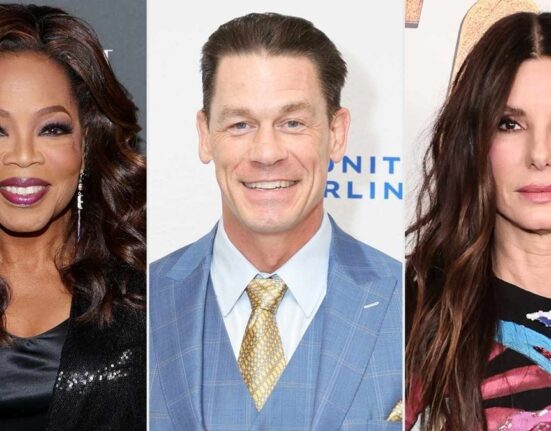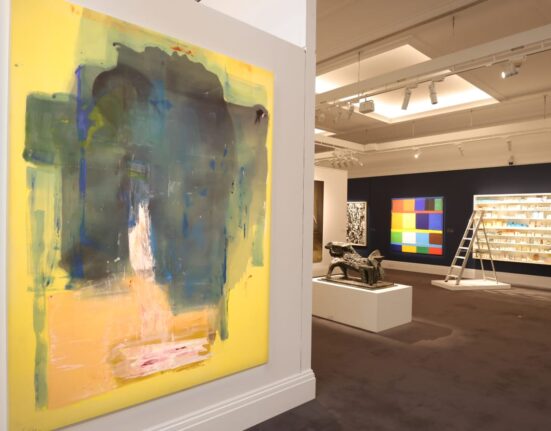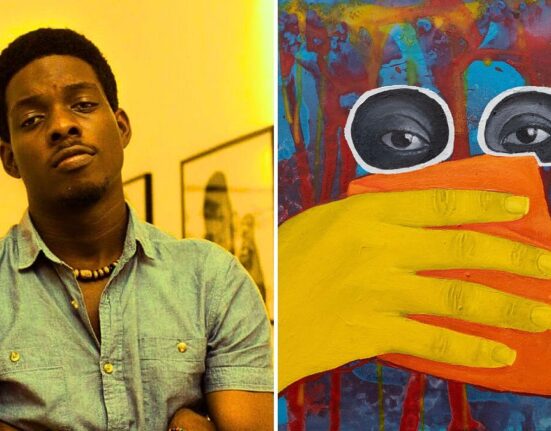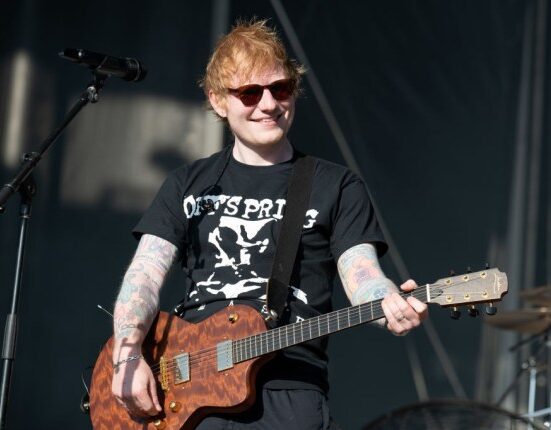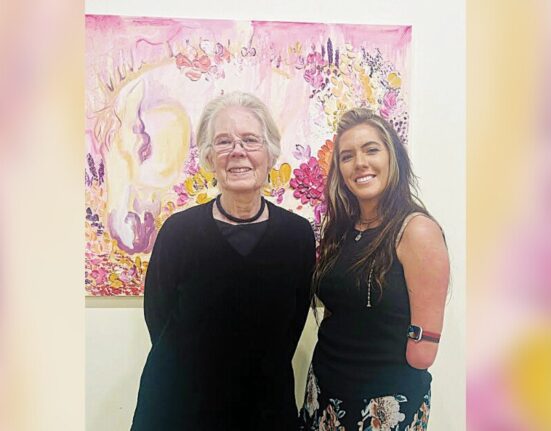Keico Watanabe ‘Jazz Sounds of New York City #1082’ mixed media on canvas $3,400
The horizontal placement of skyscrapers bleeding into the sky leads our gaze to blue and yellow stars that illuminate and transform the skyline, with hearts, flowers, musical instruments, and human and animal figures scrawled into the buildings. Our eye is then drawn to the center of the canvas, where light creates a welcoming entry into the joyful, lyrical narrative, and then to the ground which appears almost aquatic, with green tones hinting at lily pads.
Tokyo-born Keico Watanabe, who recently began focusing on live art performances in collaboration with a jazz pianist, celebrates her love of New York City in a blue, yellow, and green iteration of Jazz Sounds of New York City #1082. The mixed media on canvas is a highlight of the 32nd Annual National Arts Club (NAC) Roundtable Exhibition, showcasing a wide array of works by members and their guests, including established and emerging artists. It’s an excellent opportunity to purchase works directly from artists at accessible prices. The exhibition is on view at the NAC’s Trask Gallery at the club in the Tilden Mansion in New York’s charming Gramercy Park, through June 28. Last year’s show included an oil painting by Billy Dee Williams.
On separate walkthroughs of the gallery last Wednesday night, my 14-year-old son Michael Alexander, and I were both captivated by Watanabe’s work, evoking our collective passion for the world’s art capital and music.
“I see drama in each window of the skyscrapers that adorn the Manhattan skyline. And through those skyscrapers I see clouds, high-flying airplanes and stars that shine down on us,” says Watanabe, one of the more established artists in the exhibition. “Stars in my paintings represent hope and dreams while the big hands represent our desire to reach for those stars.”
For another consecutive year, Laura Daly served as chairwoman of the exhibition, on behalf of the NAC’s Roundtable Committee, co-chaired by Margaret Janicek and art appraiser Charles Snider.
“The mission here is to foster public interest in the arts, and the Roundtable itself means everyone has a seat at the table, so we really celebrate to promote diversity in medium, in membership, and in what we’re presenting,” Janicek said during last Wednesday’s bustling opening.
L-R, standing center: Margaret Janicek and Charles Snider Charles Snider, co-chairs of National Arts … [+]
“I’m in awe, admiration, and envy of the artists and their works. I’m not an artist. .. On my mother’s side, there were two very fine artists, but I didn’t inherit any artistic talent or any of the artist genes. I inherited the kind of genes that made it very hard to say ‘no’ when asked ‘would you like to join another committee’,” said Snider, winning applause.
Alex Merrell ‘DS (déesse)’ bronze $6,000 (LE 1/7)
We embark on “an exploration of parable and prophecy,” examining Alex Merrell’s DS (déesse), a limited edition (1/7) bronze bust of a woman with distinct, angular facial features, and short cropped hair.
Déesse, French for “goddess,” explains Merrell, also a cultural curator and creative strategist, “when pronounced in French, serves to mirror the innate divinity of the individual, seemingly abbreviated by human incarnation, yet always within the reach of reconnection to source.”
Gothic Gothic Hangman ‘The Devil’s Caravan’ India ink of handmade watercolor paper $12,500
Our journey turns delightfully dark, as we carefully examine Gothic Hangman’s The Devil’s Caravan, an intricate India ink of handmade watercolor paper, with frayed edges erupting from the frame. We’re reminded compositionally of Picasso’s Guernica.
Glen Kessler ‘CircuitScape 73: Fire & Water’ oil on canvas $2,000
Glen Kessler leads us into another reality with CircuitScape 73: Fire & Water, an oil on canvas that explores the visual similitude of computer circuitry and the urban landscape. Kessler depicts a “street level” view of the circuitry which eerily represents highways, buildings, valleys, and oceans, utilizing his painterly version of Bokeh effect, a technique used in photography where one element of the image is intentionally blurred. The blurring spills into his visual narrative where our physical and digital worlds converge.


